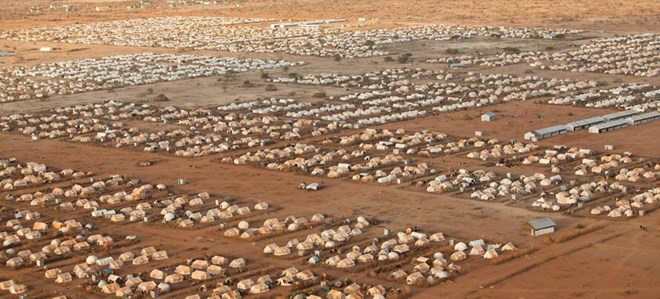Tens of thousands more Somalian migrants are anticipated to arrive in Kenya in the coming weeks, according to aid organizations, as Somalia and the Horn of Africa continue to suffer from a catastrophic drought and widespread starvation.
According to the International Rescue Committee, over the previous year, 55,000 Somali refugees have already entered Kenya’s Dadaab camps. Approximately 230,000 people live in the camps in northern Kenya right now, the majority of them Somalis who fled conflict and difficult living conditions over the previous two decades.
Jamin Kusuania, the IRC’s advocacy manager in Kenya, reported that drought victims are now arriving at the camps and needing food and medicine immediately.
“People who have been impacted by the drought, which is synonymous with malnutrition, are arriving at our facility. People with malnutrition are arriving in Dadaab. Incidences of measles have been reported among visitors arriving in Dadaab, “said Kusuania. “As IRC and others, we continue to serve these specific groups of individuals through nutrition and health care.”
Over the following six months, 60,000 more arrivals are anticipated by agencies.
One of the newest visitors is Amina Ali, who is in her 30s. She had previously resided in Dadaab, returned to Somalia in 2017, but returned when conditions there became intolerable for her little family.
Amina claimed that after losing her goats to drought, she left the port city of Kismayo in southern Somalia. Although she received some food and claimed to feel comfortable at the camp, she added that she and her seven children do not have enough help.
“I continue to live with others. I don’t have a home of my own. My kids are still at home and haven’t started school yet. We have a lot of needs and would like extra help “She spoke.
The camp’s residents struggle with overpopulation, poor sanitation, and insufficient access to basic amenities. Aid organizations worry that the camp’s crowded conditions would encourage the spread of diseases including cholera and measles, both of which have been documented cases.
The demand for humanitarian relief, according to Kusuania, is growing.
“To be able to feed the children and expectant and nursing women who find themselves in the country, support is required. Support is required to be able to guarantee that this specific group of persons has access to suitable shelter. Support is required to make sure food is accessible to this group of people, as well as human resources to be able to respond to gender-based violence and provide psychosocial services to the population that is entering the country “said Kusuania.
Kenya, along with the rest of East Africa, is experiencing a severe drought that has led to the food insecurity of more than 4 million people.
If there is not enough backing to enhance humanitarian assistance, aid organizations warn that hunger would strike Somalia.

